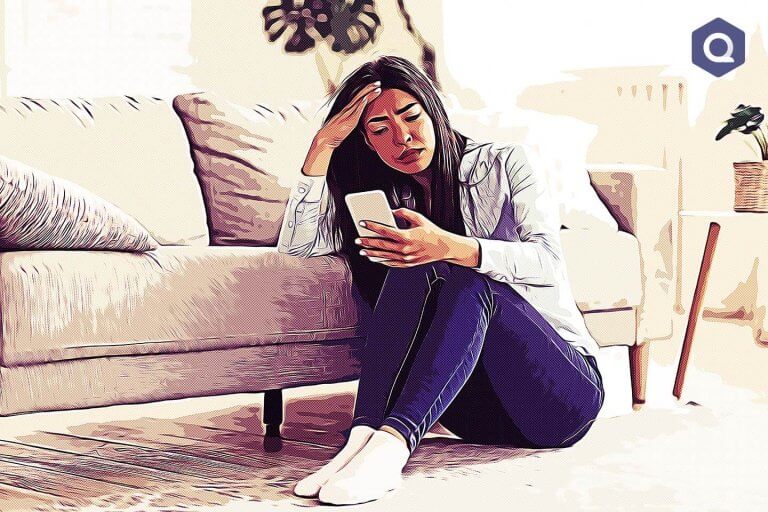Separation anxiety is a common psychological condition that can affect individuals of all ages, causing significant distress when separated from loved ones or familiar environments. While it’s a normal part of child development, persistent and intense separation anxiety can interfere with daily life and relationships [1].
Understanding and addressing separation anxiety is crucial for promoting emotional well-being and fostering healthy relationships. This comprehensive guide explores various therapy approaches designed to help individuals overcome separation anxiety and regain control over their lives. By delving into evidence-based treatments and practical coping strategies, we aim to provide valuable insights for those struggling with separation anxiety or supporting loved ones through their journey to recovery.
Understanding Separation Anxiety
Separation anxiety is characterized by excessive fear or distress when an individual is separated from someone they have a deep emotional attachment to, such as a parent, caregiver, or even a pet. While it’s most commonly associated with young children, separation anxiety can persist into adolescence and adulthood [2].
Common symptoms of separation anxiety include:
- Excessive distress when anticipating or experiencing separation
- Persistent worry about losing attachment figures
- Reluctance to leave home or engage in activities away from loved ones
- Physical symptoms such as headaches or stomachaches when separation occurs
- Nightmares or difficulty sleeping alone
The impact of separation anxiety on daily life can be profound. Individuals may struggle to attend school or work, engage in social activities, or form new relationships. Academic or occupational performance may suffer due to difficulties concentrating and focusing on tasks. Sleep disturbances are also common, further exacerbating anxiety and affecting overall well-being [3].
| Age Group | Common Symptoms |
|---|---|
| Children | Clinging to parents, School refusal, Tantrums before separation |
| Adolescents | Social withdrawal, Physical complaints (e.g., headaches), Difficulty sleeping alone |
| Adults | Excessive worry about loved ones’ safety, Difficulty leaving home, Avoidance of travel |
Cognitive-Behavioral Therapy (CBT) for Separation Anxiety
Cognitive-Behavioral Therapy (CBT) is a widely recognized and evidence-based approach for treating separation anxiety. This therapy focuses on identifying and modifying negative thought patterns and behaviors that contribute to anxiety, helping individuals develop healthier coping mechanisms and achieve a greater sense of control [4].
CBT for separation anxiety involves a collaborative process between the therapist and the individual seeking treatment. The therapist helps identify the underlying causes and triggers of separation anxiety and assists in developing strategies to manage and overcome it. Key components of CBT for separation anxiety include:
- Cognitive restructuring: Challenging and reframing negative thoughts associated with separation
- Behavioral interventions: Gradually exposing individuals to anxiety-provoking situations
- Skill-building: Developing coping strategies and problem-solving skills
CBT has shown significant effectiveness in treating separation anxiety across various age groups [5]. By addressing both cognitive and behavioral aspects of anxiety, CBT empowers individuals to develop a more balanced perspective on separation and build confidence in managing their emotions.
Exposure Therapy: Facing Fears Gradually
Exposure therapy is a powerful approach for treating separation anxiety that involves gradually exposing individuals to their fears in a safe and controlled manner. This therapy is based on the principle that repeated exposure to anxiety-provoking situations can help reduce fear and anxiety over time [6].
The core principle of exposure therapy is that avoidance maintains and reinforces anxiety, while gradual, controlled exposure helps individuals learn that their fears are often exaggerated or unfounded. Through repeated exposure, individuals can:
- Develop a more realistic assessment of the feared situation
- Build confidence in their ability to cope with separation
- Reduce the intensity of their anxiety response over time
Exposure therapy for separation anxiety typically involves creating a hierarchy of anxiety-provoking situations, starting with less challenging scenarios and gradually progressing to more difficult ones. The therapist works closely with the individual to develop an appropriate exposure plan, ensuring that the pace and intensity of exposure are tailored to their specific needs and comfort level. This gradual approach helps build resilience and confidence, allowing individuals to face their fears of separation with increasing ease over time [7].
| Therapy Approach | Effectiveness for Children | Effectiveness for Adolescents/Adults |
|---|---|---|
| Cognitive-Behavioral Therapy (CBT) | High | High |
| Exposure Therapy | Moderate to High | High |
| Play Therapy | High | Low to Moderate |
Play Therapy: Healing Through Creative Expression
Play therapy is a powerful therapeutic approach for children experiencing separation anxiety. This method recognizes that play is a natural medium for children to express their thoughts, emotions, and experiences [8]. Through play, children can explore their anxieties, develop coping strategies, and build resilience in a safe and supportive environment.
Play therapy offers numerous benefits for children struggling with separation anxiety:
- Non-verbal expression: Allows children to communicate complex emotions without relying on verbal skills
- Safe exploration: Provides a controlled environment to face fears and anxieties
- Skill development: Enhances problem-solving, emotional regulation, and social skills
- Empowerment: Gives children a sense of control and mastery over their experiences
- Relationship building: Strengthens the therapeutic alliance between child and therapist
Play therapists utilize various techniques to address separation anxiety in children, such as symbolic play, art therapy, storytelling, sand play, and role-playing. Research has shown that play therapy can be effective in reducing anxiety symptoms and improving overall emotional well-being in children [9]. By providing a supportive and creative outlet for children to process their separation anxiety, play therapy can foster healing and promote healthy emotional development.
Choosing the Right Therapy Approach
Selecting the most appropriate therapy approach for separation anxiety is crucial for effective treatment. The choice depends on various factors, including the individual’s age, severity of symptoms, personal preferences, and specific needs [10].
Factors to consider when selecting a therapy include:
- Age of the individual: Different approaches may be more suitable for children, adolescents, or adults
- Severity of symptoms: More intensive treatments may be necessary for severe cases
- Co-existing conditions: Presence of other mental health issues may influence treatment choice
- Personal preferences: Some individuals may respond better to certain therapeutic styles
- Availability and accessibility: Consider local resources and therapist expertise
Collaborating with a qualified mental health professional is essential in determining the most appropriate therapy approach. A thorough assessment by a professional can help accurately diagnose separation anxiety, develop a personalized treatment plan, monitor progress, and provide support throughout the therapeutic process.
Research indicates that a combination of therapeutic approaches may be most effective for treating separation anxiety [11]. A mental health professional can help determine the optimal combination of treatments to address an individual’s specific needs and circumstances.
Practical Coping Strategies for Managing Separation Anxiety
In addition to professional therapy, individuals with separation anxiety can benefit from implementing practical coping strategies in their daily lives. These techniques can help manage anxiety symptoms and build resilience over time [12].
Relaxation techniques that can be helpful include:
- Deep breathing exercises: Practice slow, controlled breathing to reduce physical symptoms of anxiety
- Progressive muscle relaxation: Systematically tense and relax muscle groups to promote physical and mental relaxation
- Mindfulness meditation: Focus on the present moment to reduce worry about future separations
- Guided imagery: Visualize calming scenes or positive outcomes to manage anxiety
Strategies for building resilience and self-confidence include:
- Establish routines: Create predictable daily schedules to provide a sense of security
- Practice gradual separations: Start with short separations and gradually increase duration
- Develop a goodbye ritual: Create a consistent, comforting routine for separations
- Encourage independence: Support age-appropriate activities that foster self-reliance
- Focus on positive experiences: Reflect on successful separations to build confidence
Implementing these strategies consistently can help individuals better manage their separation anxiety and improve their overall quality of life [13].
The Role of Support Systems in Recovery
Recovery from separation anxiety is greatly enhanced by the presence of strong support systems. Family, friends, and support groups play crucial roles in providing emotional support, encouragement, and practical assistance throughout the treatment process [14].
The importance of family and social support includes:
- Emotional validation: Acknowledging and accepting the individual’s feelings
- Encouragement: Offering positive reinforcement for facing fears and making progress
- Practical assistance: Helping with daily tasks and responsibilities during difficult periods
- Consistency: Maintaining a stable and supportive environment
- Education: Learning about separation anxiety to better understand and support the individual
Support groups and resources can include:
- Peer support groups: Connecting with others who share similar experiences
- Online communities: Accessing virtual support networks and resources
- Educational workshops: Attending sessions to learn coping strategies and share experiences
- Self-help materials: Utilizing books, apps, and online resources for additional support
Engaging with support systems can significantly enhance the effectiveness of therapy and improve overall outcomes for individuals with separation anxiety [15].
The Role of Technology in Treating Separation Anxiety
As technology continues to advance, innovative approaches to treating separation anxiety are emerging. These digital tools and interventions offer new possibilities for therapy, self-help, and ongoing support for individuals struggling with separation anxiety [16].
One of the most promising technological advancements in this field is the use of virtual reality (VR) in exposure therapy. VR allows therapists to create controlled, realistic environments where individuals can face their fears related to separation in a safe and gradual manner. This approach has shown promising results in treating various anxiety disorders, including separation anxiety [17].
Mobile applications and online platforms are also playing an increasingly important role in supporting individuals with separation anxiety. These tools can provide:
- Guided relaxation exercises and mindfulness practices
- Cognitive restructuring techniques
- Progress tracking and symptom monitoring
- Virtual support groups and community forums
Research has shown that internet-delivered cognitive behavioral therapy (iCBT) can be effective in treating anxiety disorders, including separation anxiety [18]. These digital interventions can be particularly beneficial for individuals who have limited access to in-person therapy due to geographical constraints or other barriers.
Wearable devices and biofeedback technology are also being explored as tools to help individuals manage their anxiety symptoms. These devices can monitor physiological indicators of anxiety, such as heart rate and skin conductance, and provide real-time feedback to help users implement relaxation techniques [19].
While these technological interventions show promise, it’s important to note that they are most effective when used in conjunction with traditional therapy and under the guidance of a qualified mental health professional. As the field of digital mental health continues to evolve, we can expect to see more innovative and personalized approaches to treating separation anxiety, making effective treatment more accessible to those in need.
Conclusion
Overcoming separation anxiety is a journey that requires patience, commitment, and the right therapeutic approach. By understanding the nature of separation anxiety and exploring various treatment options, individuals can find effective ways to manage their symptoms and improve their quality of life. Cognitive-Behavioral Therapy, Exposure Therapy, and Play Therapy offer valuable tools for addressing separation anxiety, while practical coping strategies and strong support systems play crucial roles in the recovery process.
It’s important to remember that seeking help is a sign of strength, not weakness. With professional guidance, personal dedication, and support from loved ones, individuals struggling with separation anxiety can develop the skills and confidence needed to face their fears and lead fulfilling lives. Whether you’re personally affected by separation anxiety or supporting someone who is, remember that recovery is possible, and there are numerous resources available to help along the way.
Frequently Asked Questions
The duration of treatment and time to see improvements can vary significantly depending on the individual, the severity of their symptoms, and the chosen therapy approach. Some people may start experiencing noticeable improvements within 8-12 weeks of consistent therapy, while others might require several months. Cognitive-Behavioral Therapy (CBT) for anxiety disorders, including separation anxiety, often shows significant improvements within 12-20 sessions. However, it’s important to remember that healing is not linear, and progress may come in waves. Consistency in therapy and practicing coping strategies are key factors in seeing lasting improvements.
Yes, medication can be used alongside therapy for treating separation anxiety, especially in more severe cases. Selective Serotonin Reuptake Inhibitors (SSRIs) are the most commonly prescribed medications for anxiety disorders, including separation anxiety. However, the decision to use medication should be made in consultation with a psychiatrist or qualified healthcare provider. It’s important to note that medication is typically most effective when combined with therapy, rather than used as a standalone treatment. The combination of medication and therapy can help manage symptoms more effectively, allowing individuals to engage more fully in the therapeutic process.
Yes, there are several strategies that can be helpful in managing separation anxiety in workplace or educational settings:
- Gradual exposure: Work with employers or educators to create a plan for gradual exposure to the anxiety-provoking environment.
- Establish a support system: Identify a trusted colleague or classmate who can provide support during difficult moments.
- Use relaxation techniques: Practice deep breathing or mindfulness exercises during breaks or when feeling overwhelmed.
- Set realistic goals: Break tasks into smaller, manageable steps to avoid feeling overwhelmed.
- Maintain communication: Keep open lines of communication with supervisors or teachers about your progress and any challenges you’re facing.
- Create a comforting workspace: Personalize your work area with comforting items that remind you of your safe space.
- Use technology: If possible, arrange for occasional remote work or virtual check-ins with loved ones during the day.
While some separation anxiety is normal in young children, Separation Anxiety Disorder (SAD) is characterized by excessive and age-inappropriate anxiety. Here are some key differences:
- Duration: Normal separation anxiety typically peaks around 18 months and decreases by age 3. SAD persists beyond this age.
- Intensity: SAD causes significant distress that interferes with daily activities and development.
- Physical symptoms: Children with SAD often experience physical symptoms like headaches or stomachaches when separation occurs or is anticipated.
- Avoidance: Children with SAD may consistently avoid situations that require separation.
- Fears: Children with SAD may express unrealistic worries about harm coming to themselves or their attachment figures when separated. If parents are concerned, it’s best to consult with a pediatrician or child psychologist for a proper evaluation.
Yes, virtual reality (VR) is increasingly being used as a tool in exposure therapy for various anxiety disorders, including separation anxiety. VR exposure therapy allows therapists to create controlled, realistic environments where individuals can face their fears in a safe setting. For separation anxiety, VR can simulate scenarios such as being alone in a house, saying goodbye to loved ones, or navigating public spaces independently. The benefits of VR in therapy include:
- Controlled exposure: Therapists can precisely control the intensity and duration of exposure.
- Repeatability: Scenarios can be repeated as often as needed without real-world logistics.
- Safety: Clients can face fears knowing they’re in a safe, controlled environment.
- Engagement: VR can be more engaging for some clients, especially younger individuals. While promising, VR should be used as a complement to traditional therapy methods and under the guidance of a trained professional.
References
- ^ Cartwright-Hatton, S., McNicol, K., & Doubleday, E. (2006). Anxiety in a neglected population: Prevalence of anxiety disorders in pre-adolescent children. Clinical Psychology Review, 26(7), 817-833. https://doi.org/10.1016/j.cpr.2005.12.002
- ^ Ehrenreich, J. T., Santucci, L. C., & Weiner, C. L. (2008). Separation anxiety disorder in youth: Phenomenology, assessment, and treatment. Psicologia Conductual, 16(3), 389-412. https://www.ncbi.nlm.nih.gov/pmc/articles/PMC2788956/
- ^ Bögels, S. M., Knappe, S., & Clark, L. A. (2013). Adult separation anxiety disorder in DSM-5. Clinical Psychology Review, 33(5), 663-674. https://doi.org/10.1016/j.cpr.2013.03.006
- ^ Schneider, S., Blatter-Meunier, J., Herren, C., Adornetto, C., In-Albon, T., & Lavallee, K. (2011). Disorder-specific cognitive-behavioral therapy for separation anxiety disorder in young children: A randomized waiting-list-controlled trial. Psychotherapy and Psychosomatics, 80(4), 206-215. https://doi.org/10.1159/000323444
- ^ Kendall, P. C., Compton, S. N., Walkup, J. T., Birmaher, B., Albano, A. M., Sherrill, J., ... & Piacentini, J. (2010). Clinical characteristics of anxiety disordered youth. Journal of Anxiety Disorders, 24(3), 360-365. https://doi.org/10.1016/j.janxdis.2010.01.009
- ^ Kossowsky, J., & Schneider, S. (2011). Separation anxiety disorder. In D. McKay & E. A. Storch (Eds.), Handbook of Child and Adolescent Anxiety Disorders (pp. 245-259). Springer. https://doi.org/10.1007/978-1-4419-7784-7_17
- ^ Santucci, L. C., & Ehrenreich-May, J. (2013). A randomized controlled trial of the child anxiety multi-day program (CAMP) for separation anxiety disorder. Child Psychiatry & Human Development, 44(3), 439-451. https://doi.org/10.1007/s10578-012-0338-6
- ^ Stulmaker, H. L., & Ray, D. C. (2015). Child-centered play therapy with young children who are anxious: A controlled trial. Children and Youth Services Review, 57, 127-133. https://doi.org/10.1016/j.childyouth.2015.08.005
- ^ Baggerly, J., & Parker, M. (2005). Child-centered group play therapy with African American boys at the elementary school level. Journal of Counseling & Development, 83(4), 387-396. https://doi.org/10.1002/j.1556-6678.2005.tb00360.x
- ^ Kagan, E. R., Frank, H. E., & Kendall, P. C. (2017). Accommodation in youth with OCD and anxiety. Clinical Psychology: Science and Practice, 24(1), 78-98. https://doi.org/10.1111/cpsp.12186
- ^ Walkup, J. T., Albano, A. M., Piacentini, J., Birmaher, B., Compton, S. N., Sherrill, J. T., ... & Kendall, P. C. (2008). Cognitive behavioral therapy, sertraline, or a combination in childhood anxiety. New England Journal of Medicine, 359(26), 2753-2766. https://doi.org/10.1056/NEJMoa0804633
- ^ Pereira, A. I., Muris, P., Mendonça, D., Barros, L., Goes, A. R., & Marques, T. (2016). Parental involvement in cognitive-behavioral intervention for anxious children: Parents' in-session and out-session activities and their relationship with treatment outcome. Child Psychiatry & Human Development, 47(1), 113-123. https://doi.org/10.1007/s10578-015-0549-8
- ^ Lebowitz, E. R., Marin, C., Martino, A., Shimshoni, Y., & Silverman, W. K. (2020). Parent-based treatment as efficacious as cognitive-behavioral therapy for childhood anxiety: A randomized noninferiority study of supportive parenting for anxious childhood emotions. Journal of the American Academy of Child & Adolescent Psychiatry, 59(3), 362-372. https://doi.org/10.1016/j.jaac.2019.02.014
- ^ Rudy, B. M., Davis, T. E., & Matthews, R. A. (2012). The relationship among self-efficacy, negative self-referent cognitions, and social anxiety in children: A multiple mediator model. Behavior Therapy, 43(3), 619-628. https://doi.org/10.1016/j.beth.2011.11.003
- ^ Crawford, A. M., Manassis, K. (2011). Anxiety, social skills, friendship quality, and peer victimization: An integrated model. Journal of Anxiety Disorders, 25(7), 924-931. https://doi.org/10.1016/j.janxdis.2011.05.005
- ^ Palmqvist, B., Carlbring, P., & Andersson, G. (2007). Internet-delivered treatments with or without therapist input: does the therapist factor have implications for efficacy and cost? Expert Review of Pharmacoeconomics & Outcomes Research, 7(3), 291-297. https://doi.org/10.1586/14737167.7.3.291
- ^ Carl, E., Stein, A. T., Levihn-Coon, A., Pogue, J. R., Rothbaum, B., Emmelkamp, P., ... & Powers, M. B. (2019). Virtual reality exposure therapy for anxiety and related disorders: A meta-analysis of randomized controlled trials. Journal of Anxiety Disorders, 61, 27-36. https://doi.org/10.1016/j.janxdis.2018.08.003
- ^ Andrews, G., Basu, A., Cuijpers, P., Craske, M. G., McEvoy, P., English, C. L., & Newby, J. M. (2018). Computer therapy for the anxiety and depression disorders is effective, acceptable and practical health care: An updated meta-analysis. Journal of Anxiety Disorders, 55, 70-78. https://doi.org/10.1016/j.janxdis.2018.01.001
- ^ Schoenberg, P. L., & David, A. S. (2014). Biofeedback for psychiatric disorders: a systematic review. Applied Psychophysiology and Biofeedback, 39(2), 109-135. https://doi.org/10.1007/s10484-014-9246-9



